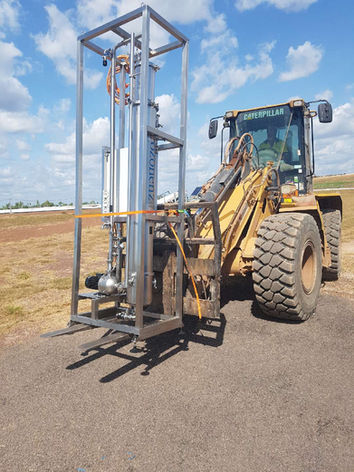Protecting our enviroment
PFOA & PFAS Removal
Landfills are a major source of PFAS contamination, as PFAS-laden waste releases harmful chemicals into the environment through landfill leachate. To address this critical issue, ozone foam fractionation is emerging as an innovative and highly effective solution for PFAS removal.

Ozone foam fractionation stands out as a promising technology for tackling PFAS contamination in landfill leachate. Its ability to deliver high removal efficiency, optimize resource usage, and minimize waste volumes makes it an attractive solution for industries seeking sustainable and cost-effective PFAS treatment options.
Highly Effective Removal
Cost Savings
-
Ozone foam fractionation produces 2–4 times less foamate compared to air foam systems, translating to significant reductions in the volume of waste requiring disposal.
-
Reduced foamate volumes mean lower transportation and disposal costs, which are often major expenses in landfill leachate treatment.
-
The smaller storage requirements for foamate simplify operational logistics, making ozone foam fractionation a practical choice for on-site applications.
Optimized Operating Conditions
-
Ozone flow rate: An optimal was identified, ensuring effective interaction between ozone bubbles and PFAS molecules while minimizing energy consumption.
-
Dosing concentration: A concentration of ozone was found to balance effective PFAS removal with operational efficiency. This level ensures sufficient ozone availability for interaction with PFAS at the gas-water interface.
Environmental Impact
-
This technology offers a sustainable approach to PFAS management, reducing the spread of harmful contaminants into surrounding ecosystems.
-
The use of ozone as a treatment agent not only enhances PFAS removal but also aligns with environmentally friendly practices, as ozone decomposes into oxygen after use.


